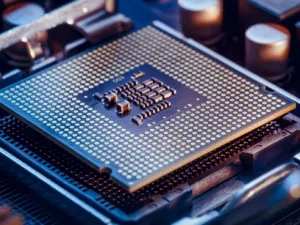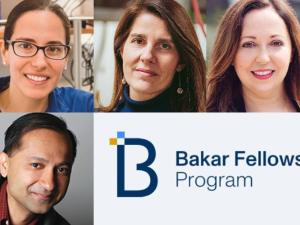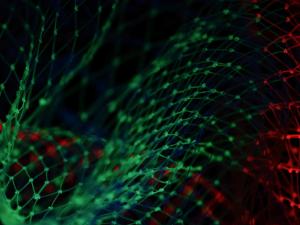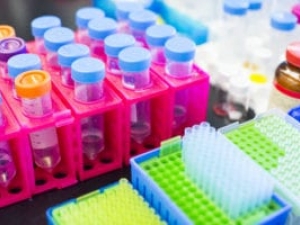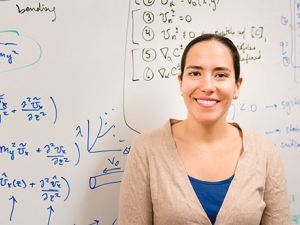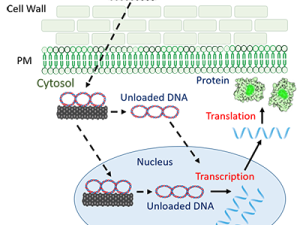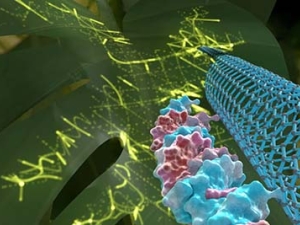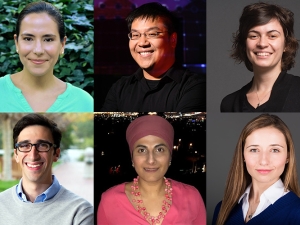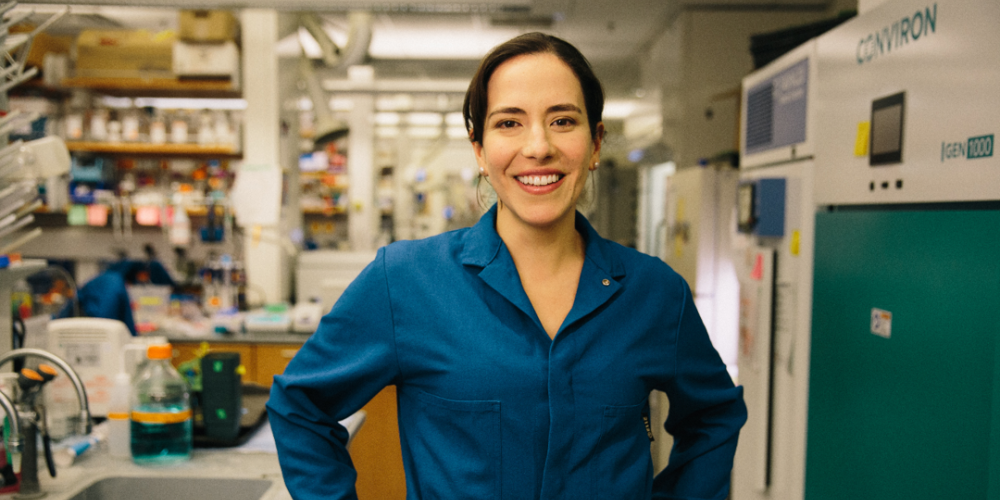

Research Bio
Markita del Carpio Landry is a physicist, neuroscientist, and plant biotechnologist whose research combines nanotechnology, imaging, and neurobiology. She is best known for developing nanosensors that monitor neurotransmitter dynamics in the brain, providing new tools to study dopamine and serotonin in real time. Her interdisciplinary work spans physics, chemistry, and biology to create technologies for probing and manipulating neural circuits, and for genetic engineering of agricultural crops.
Landry is Professor of Chemical and Biomolecular Engineering, of Neuroscience, and of Molecular and Cellular Biology at UC Berkeley and a Chan Zuckerberg Biohub Investigator. She has received over 40 career awards and serves on the scientific advisory board of numerous biotechnology companies.
Select Awards
- 2025 Guggenheim Fellow
- 2025 MIT Charles L. Cooney Endowed Lecture
- 2025 Caltech Robert W. Vaughan Endowed Lecture
- 2025 Member, National Academies of Science of Bolivia
- 2024 Blavatnik National Laureate in Chemistry
- 2024 Member, New York Academy of Sciences
- 2024 Notre Dame 2024 Thiele Award lecture
- 2024 Heising-Simons Faculty Awar
- 2024 Society for Neuroscience (SfN) Presidential Lecture
- 2023 Schmidt Polymaths Award
- 2023 Keck Foundation Award
- 2023 The Purdue Duncan and Suzanne Mellichamp Award Lectureship
- 2023 Bakar Prize
- 2022 UNC Chapel Hill Distinguished Young Alumni Award
- 2022 McKnight Scholar Award
- 2022 Philomathia Prize
- 2022 Vilcek Prize for Creative Promise in Biomedical Science
- 2021 Chan-Zuckerberg Biohub Investigator
- 2021 Dreyfus Foundation Teacher-Scholar Award
- 2021 NSF CAREER Award
- 2021 Nature Research Awards for Inspiring Women in Science
- 2021 NAS Standing Committee on Biotechnology Capabilities and National Security Needs
- 2021 University of Illinois at Urbana-Champaign Commencement Speaker
- 2020 Cell Press 100 Most Inspiring Hispanic/Latinx Scientists in America
- 2020 SfN Janett Rosenberg Trubatch Career Development Award
- 2020 University of Illinois Alumni Association Young Alumni Award
- 2020 Frontiers of Imaging: CZI Deep Tissue Imaging Award
- 2020 Emerging Leader in Molecular Spectroscopy Award
- 2020 ECS Nanocarbons Division Young Investigator Award
- 2019 C&EN Talented 12
- 2019 Kavli Fellow, National Academies of Science
- 2019 Bakar Fellow
- 2019 Prytanean Faculty Award
- 2018 Society of Hispanic Professional Engineers Young Investigator Award
- 2018 HHMI Gilliam Fellow
- 2018 DARPA Young Faculty Award
- 2018 Sloan Foundation Fellow
- 2017 Kavli Fellow, National Academies of Engineering
- 2017 Innovative Genomics Institute Fellow
- 2017 Foundation for Food and Agriculture Research New Innovator Award
- 2017 Hellen Wills Neuroscience Institute – Radical Ideas Awardee
- 2017 Stanley Fahn Junior Faculty Award
- 2017 Beckman Foundation Young Investigator
- 2017 Chan-Zuckerberg Biohub Investigator
- 2016 Burroughs Wellcome Fund Career Award at the Scientific Interface
- 2015 Brain and Behavior Foundation (NARSAD) Young Investigator Award
Select publications
- Voke, E., Arral, M., Squire, H.J., Lin, T., Coreas, R., Lui, A., Lavarone, A.T., Pinals, R.L.‡, Whitehead, K.A.‡, Landry, M.P.‡ Protein corona formed on lipid nanoparticles compromises delivery efficiency of mRNA cargo. Nature Communications (2025)
- Black, A.B., Komatsu, N., Zhao, J., Raskey, S.R., Serrano, N.S., Sharma, S.R., Manoli, D.S., Landry, M.P.‡, Beery, A.K.‡ Oxytocin receptor absence reduces selectivity in peer relationships and alters neurochemical release in prairie voles. Current Biology(2025)
- Highlighted in Popular Science
- Highlighted in UC Berkeley News
- Mun, J., Navarro, N., Jeong, S., Ouassil, N., Leem, E., Beyene, A.G., Landry, M.P.‡ Near Infrared Nanosensors Enable Optical Imaging of Oxytocin with Selectivity over Vasopressin in Acute Mouse Brain Slices. PNAS (2024)
- Wang, J.W., Goh, N., Lien, E., Gonzalez Grandio, E., Landry, M.P.‡ Quantification of cell penetrating peptide mediated delivery of proteins in plant leaves. Nature Communications Biology (2023)
- Squire, H., Tomatz, S., Voke, E., Landry, M.P.‡ The emerging role of nanotechnology in plant genetic engineering. Nature Reviews Bioengineering (2023)
- Ashkarran, A.A., Gharibi, H., Voke, E., Landry, M.P., Saei, A.A.‡, Mahmoudi, M.‡ Measurements of heterogeneity in proteomics analysis of nanoparticle protein corona across core facilities. Nature Communications (2022)
- Zhang, H.*, Goh, N.S.*, Wang, J., Demirer, G.S., Butrus, S., Park, S-J, Landry, M.P.‡ Nanoparticle Cellular Internalization is Not Required for RNA Delivery to Mature Plant Leaves. Nature Nanotechnology (2022)
- Highlighted in Nature Materials (2021), C. Horejs
- Ouassil, N.*, Pinals, R.L.*, O’Donnell, J.T.D., Wang, J., Landry, M.P.‡ Supervised Learning Model to Predict Protein Adsorption to Nanoparticles. Science Advances (2022)
- Demirer, G.S.‡, Silva, T.N., Jackson, C.T., Thomas, J.B., Ehrhardt, D., Rhee, S.Y.‡, Mortimer, J.C.‡, Landry, M.P.‡ Nanotechnology to advance CRISPR/Cas genetic engineering of plants. Nature Nanotechnology (2021). 16, 243–250
- Demirer, G.S., Zhang, H., Goh, N.S., Chang, R., Landry, M.P.‡ Carbon nanocarriers deliver siRNA to intact plant cells for efficient gene knockdown. Science Advances (2020). 6 (26).
- Jeong, S., Yang, D., Beyene, A.G., O’Donnell, J.T.D., Gest, A. M., Navarro, N., Sun, X., Landry, M.P.‡ High Throughput Evolution of Near Infrared Serotonin Nanosensors. Science Advances (2019). 5 (12), 1-12
- Beyene, A. G., Delevich, K., O’Donnell, J.T.D., Piekarski, D.J., Lin, W.C., Thomas, A.W., Yang, S.J., Kosillo, P., Yang, D., Wilbrecht, L., Landry, M.P.‡ Imaging Striatal Dopamine Release Using a Non-Genetically Encoded Near-Infrared Fluorescent Catecholamine Nanosensor. Science Advances (2019). 5 (7), 1-11
- Highlighted in Nature (2019), J. Lambert
- Highlighted in C&E News
- Highlighted in the San Francisco Chronicle
- Demirer, G.S., Zhang, H., Matos, J., Goh, N., Cunningham, F.J., Sung, Y., Chang, R., Aditham, A.J., , Chio, L., Cho, M.J., Staskawicz, B., Landry, M.P.‡ High Aspect Ratio Nanomaterials Enable Delivery of Functional Genetic Material Without DNA Integration in Mature Plants. Nature Nanotechnology (2019). 14, 456-464
- Interview and Highlighted on NPR, popular mechanics, and C&E news
- Selected for NPR’s Changing the World One Invention at a Time series
- Zhang, H.*, Demirer, G.S.*, Zhang, H., Ye, T., Goh, N.S., Aditham, A.J., Cunningham, F.J., Fan, C., Landry, M.P.‡ Low-dimensional DNA Nanostructures Coordinate Gene Silencing in Mature Plants. PNAS (2019). 116 (15), 7543-7548
Research Expertise and Interest
nanomaterials, fluorescence microscopy, sensors, imaging, neuroscience, plant engineering


